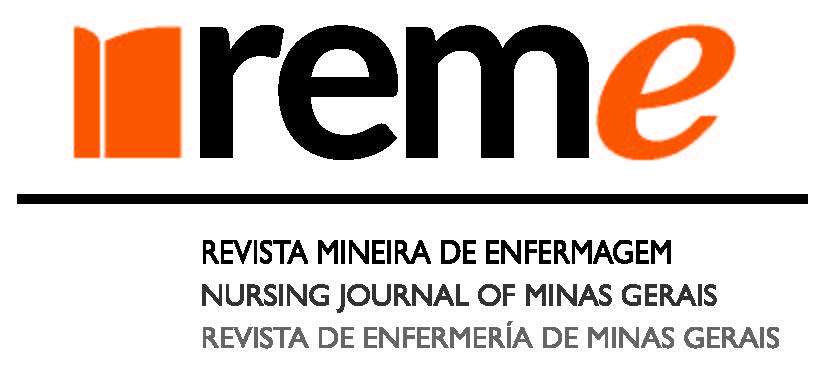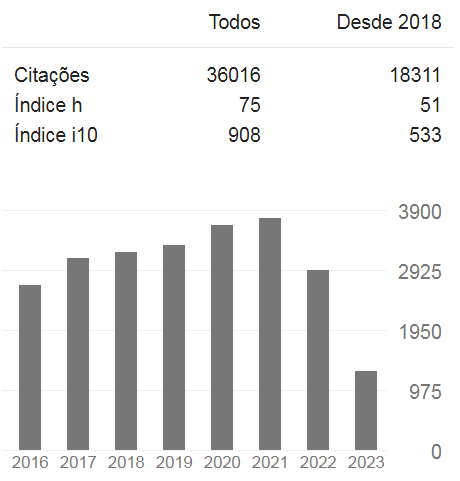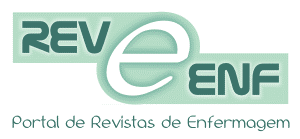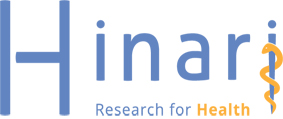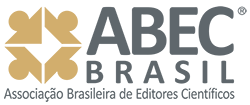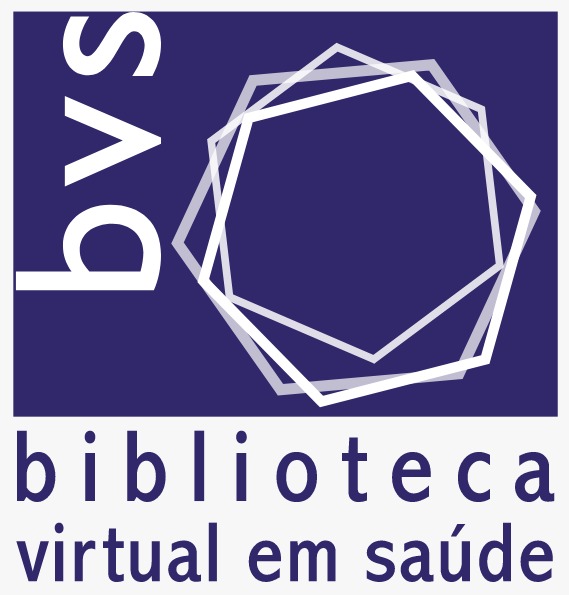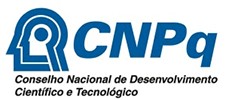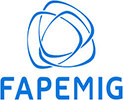Technologies for promoting skin-to-skin contact in the first hour of life
An integrative review
DOI:
https://doi.org/10.35699/reme.v28i1.38816Keywords:
Technology, Perinatal Care, Mother-Child Relations, Humanizing DeliveryAbstract
Objective: to map scientific production on the use of technologies to promote skin-to-skin contact in the first hour of life. Method: this was an integrative review of the Lilacs, BDENF, MedLine/PubMed, CINAHL, Web of Science, SCOPUS, Cochrane and Embase databases. The searches were carried out on April 10, 2023, using the following descriptors: "mothers"; "Newborn"; "neonate"; "neonates"; "Newborns"; "Educational Technology"; "Instructional Technology"; "Information Technology"; "Information Technology"; "multimedia"; "Health Education"; "Educational Intervention"; "Distance Education"; "Media"; "Social Media"; "Online Social Networks"; "Audiovisual Resources"; "Educational Film and Video"; "Teaching Materials"; "Mother-Child Relationships"; "Maternal-Filial Relationships"; "Mother-Child Relationships"; and "Skin-to-Skin Contact". Results: out of a total of 2,017 publications, our sample consisted of ten studies. The first category identified was "Management and care technologies to encourage skin-to-skin contact", which explored management and care technologies aimed at health professionals.The second category was "Educational technologies to promote skin-to-skin contact", which looked at educational technologies aimed at pregnant women. Conclusion: management technologies aimed at health professionals prevailed, resulting in an increase in the practice of skin-to-skin contact in the first hour of life.
Downloads
References
Fundo das Nações Unidas para a Infância (UNICEF). Iniciativa Hospital Amigo da Criança: revista, atualizada e ampliada para o cuidado integrado: módulo 1: histórico e implementação. Brasília: Ministério da Saúde; 2008[citado em 2021 ago. 10]. Disponível em: https://bvsms.saude.gov.br/bvs/publicacoes/iniciativa_hospital_amigo_crianca_modulo1.pdf
Araújo KEAS, Santos CC, Caminha MD, Silva SL, Pereira JD, Batista Filho M. Skin to skin contact and the early initiation of breastfeeding: a cross-sectional study. Texto & Contexto Enferm [Internet]. 2021[citado em 2022 fev. 10];30:e20200621. Disponível em: https://doi.org/10.1590/1980-265x-tce-2020-0621
Holztrattner JS, Gouveia HG, Moraes MG, Carlotto FD, Klein BE, Coelho DF. Early skin-to-skin contact in a child friendly hospital: perceptions of the obstetric nurses. Rev Gauch Enferm [Internet]. 2021[citado em 2022 jul. 15];42:e20190474. Disponível em: https://doi.org/10.1590/1983-1447.2021.20190474
Linnér A, Westrup B, Lode-Kolz K, Klemming S, Lillieskold S, Markhus PH, et al. Immediate parent-infant skin-to-skin study (IPISTOSS): study protocol of a randomised controlled trial on very preterm infants cared for in skin-to-skin contact immediately after birth and potential physiological, epigenetic, psychological and neurodevelopmental consequences. BMJ Open [Internet]. 2020 [citado em 2022 jul. 20];10 (7):e038938. Disponível em: https://doi.org/10.1136/bmjopen-2020-038938
Kahalon R, Preis H, Benyamini Y. Who benefits most from skin-to-skin mother-infant contact after birth? Survey findings on skin-to-skin and birth satisfaction by mode of birth. Midwifery [Internet]. 2021[citado em 2022 jul. 20];92:102862. Disponível em: https://doi.org/10.1016/j.midw.2020.102862
Ministério da Saúde (BR). Humanização do parto Humanização no Pré-natal e nascimento. Brasília: Ministério da Saúde; 2002[citado em 2021 ago. 12]. Disponível em: https://bvsms.saude.gov.br/bvs/publicacoes/parto.pdf
Ministério da Saúde (BR). Portaria nº 371, de 7 de maio de 2014. Brasília (DF): Ministério da Saúde; 2014[citado em 2022 ago. 12]. Disponível em: https://bvsms.saude.gov.br/bvs/sas/Links%20finalizados%20SAS%202014/prt0371_07_05_2014.html
Ministério da Saúde (BR). Portaria nº 1.459 de 24 de junho de 2011. Institui, no âmbito do Sistema Único de Saúde (Sus), a Rede Cegonha. Brasília (DF): Ministério da Saúde; 2011[citado em 2022 ago. 20]. Disponível em: https://bvsms.saude.gov.br/bvs/saudelegis/gm/2011/prt1459_24_06_2011.html
Saco MC, Coca KP, Abrão ACFV, Marcacine KO, Abuchaim ESV. Skin-to-skin contact followed by breastfeeding in the first hour of life: associated factors and influences on exclusive breastfeeding. Texto & Contexto Enferm [Internet]. 2019[citado em 2022 fev. 22];28:e20180260. Disponível em: http://dx.doi.org/10.1590/1980-265X-TCE-2018-0260
Kuamoto RS, Bueno M, Riesco MLG. Skin-to-skin contact between mothers and full-term newborns after birth: a cross-sectional study. Rev Bras Enferm [Internet]. 2021[citado em 2022 fev. 22];74 (Suppl 4):e20200026. Disponível em: http://dx.doi.org/10.1590/0034-7167-2020-0026
Mukherjee D, Chandra Shaw S, Venkatnarayan K, Dudeja P. Skin-to-skin contact at birth for vaginally delivered neonates in a tertiary care hospital: A cross-sectional study. Medical J Armed Forces India [Internet]. 2020 [citado em 2022 jul. 20];76 (2):180-4. Disponível em: https://doi.org/10.1016/j.mjafi.2018.11.008
Ayres LFA, Cnossen RE, Passos CM, Lima VD, Prado MRMC, Beirigo BA. Factors associated with early skin-to-skin contact in a maternity hospital. Esc Anna Nery Rev Enferm [Internet]. 2021[citado em 2022 jan. 15];25 (2):e20200116. Disponível em: https://doi.org/10.1590/2177-9465-EAN-2020-0116
Campos PM, Gouveia HG, Strada JKR, Moraes BA.Skin-to-skin contact and breastfeeding of newborns in a university hospital. Rev Gaúch Enferm. 2020[citado em 2022 jan. 11];41 (esp):e20190154. Disponível em: https://doi.org/10.1590/1983-1447.2020.20190154
Nietsche EA, Backes VMS, Colomé CLM, Ceratti RN, Ferraz F. Tecnologias educacionais, assistenciais e gerenciais:uma reflexão a partir da concepção dos docentes de enfermagem. Rev Latino-am Enferm [Internet]. 2005[citado em 2023 abr. 09];13 (3):344-53. Disponível em: https://www.scielo.br/j/rlae/a/D73Y67WhnhmbtqqX58czmzL/?lang=pt&format=pdf
Mendes KDS, Silveira RCP, Galvão CM. Revisão integrativa: método de pesquisa para a incorporação de evidências na saúde e na enfermagem. Texto & Contexto Enferm [Internet]. 2008[citado em 2021 ago. 11];17 (4): 758-64. Disponível em: https://doi.org/10.1590/S0104-07072008000400018
Ouzzani M, Hammady H, Fedorowicz Z, Elmagarmid A. Rayyan - a web and mobile app for systematic reviews. Systematic Reviews [Internet]. 2016[citado em 2021 ago. 11];5:210. Disponível em: https://doi.org/10.1186/s13643-016-0384-4
Peters MDJ, Godfrey C, McInerney P, Munn Z, Tricco AC, Khalil, H. Chapter 11: Scoping Reviews (2020 version). In: Aromataris E, Munn Z. JBI Manual for Evidence Synthesis. 2020[citado em 2021 ago. 11]. Disponível em: https://synthesismanual.jbi.global
Ursi ES, Galvão CM. Prevenção de lesões de pele no perioperatório: revisão integrativa da literatura. Rev Latino-am Enferm [Internet] 2006[citado 2021 ago. 11];14 (1):124-31. Disponível em: https://www.scielo.br/j/rlae/a/7hS3VgZvTs49LNX9dd85VVb/?format=pdf&lang=pt
Canadian Public Health Association. Public Health: A conceptual framework. Ottawa: Canadian Public Health Association; 2017[citado em 2021 ago. 10]. Disponível em: https://www.cpha.ca/public-health-conceptual-framework
Melnyk BM, Fineout-Overholt E. Making the case for evidence based practice. In: Evidence-based practice in nursing & health care:a guide to best practice. Philadelphia: Lippincot Williams & Wilkins; 2005[citado em 2021 ago. 11]. Disponível em: https://doi.org/10.1037/ t68160-000
Carvalho NA, Santos JD, Sales IM, Araújo AA, Sousa AS, Morais FF. Care transition of preterm infants: from maternity to home. Acta Paul Enferm [Internet]. 2021[citado em 2021 ago. 25];34:eAPE02503. Disponível em: https://doi.org/10.37689/acta-ape/2021AR02503
Caponero CM, Zoorob DG, Heh V, Moussa HN. The effect of video education on skin-to-skin contact at the time of delivery: a randomized controlled trial. Am J Perinatol Reports [Internet]. 2022 [citado em 2022 jul. 20];12 (01):e10-e16. Disponível em: https://doi.org/10.1055/s-0041-1741540
Sanchez-Espino LF, Zuniga-Villanueva G, Ramirez-GarciaLuna JL. An educational intervention to implement skin-to-skin contact and early breastfeeding in a rural hospital in Mexico. Int Breastfeed J [Internet]. 2019[citado em 2021 ago. 12];14 (8):1-9. Disponível em: https://doi.org/10.1186/s13006-019-0202-4
Mbalinda S, Hjelmstedt A, Nissen E, Odongkara BM, Waiswa P, Svensson K. Experience of perceived barriers and enablers of safe uninterrupted skin-to-skin contact during the first hour after birth in Uganda. Midwifery [Internet]. 2018[citado em 2022 fev. 22];67:95-102. Disponível em: https://doi.org/10.1016/j.midw.2018.09.009
Alenchery AJ, Thoppil J, Britto CD, Onis JV, Fernandez L, Suman Rao PN. Barriers and enablers to skin-to-skin contact at birth in healthy neonates - a qualitative study. BMC Pediatr [Internet]. 2018[citado em 2022 ago. 12];18 (1):48. Disponível em: https://doi.org/10.1186/s12887-018-1033-y
Stevens J, Schmied V, Burns E, Dahlen HG. Who owns the baby? A video ethnography of skin-to-skin contact after a caesarean section. Women Birth [Internet]. 2018[citado em 2022 ago. 12];31 (6):453-62. Disponível em: https://doi.org/10.1016/j.wombi.2018.02.005
Silva CM, Pellegrinelli ALR, Pereira SCL, Passos LR, Santos LC. Educational practices in accordance with the “Ten steps to successful breastfeeding” in a Human Milk Bank. Ciênc Saúde Colet [Internet]. 2017[citado em 2021 ago. 12];22 (5). Disponível em: https://doi.org/10.1590/1413-81232017225.14442015
Turenne JP, Héon M, Aita M, Faessler J, Doddridge C. Educational Intervention for an Evidence-Based Nursing Practice of Skin-to-Skin Contact at Birth. J Perinat Educ [Internet]. 2016[citado em 2021 ago. 10];25 (2):116-28. Disponível em: https://doi.org/10.1891/1058-1243.25.2.116
Schoch DE, Lawhon G, Wicker LA, Yecco G. An interdisciplinary multidepartmental educational program toward baby friendly hospital designation. Adv Neonatal Care [Internet]. 2014[citado em 2021 ago. 12];14 (1):38-43. Disponível em: https://doi.org/10.1097/ANC.0000000000000029
Nahidi F, Tavafian SS, Heidarzadeh M, Hajizadeh E, Montazeri A. The Mother-Newborn Skin-to-Skin Contact Questionnaire (MSSCQ): development and psychometric evaluation among Iranian midwives. BMC Pregnancy Childbirth [Internet]. 2014[citado em 2021 ago. 12];24:14:85. Disponível em: https://doi.org/10.1186/1471-2393-14-85
Hung KJ, Berg O. Early skin-to-skin after cesarean to improve breastfeeding. MCN Am J Matern Child Nurs [Internet]. 2011 [citado em 2021 ago. 12];36 (5):318-24. Disponível em: https://doi.org/10.1097/NMC.0b013e3182266314
Nissen E, Svensson K, Mbalinda S, Brimdyr K, Waiswa P, Odongkara BM, Hjelmstedt A. A low-cost intervention to promote immediate skin-to-skin contact and improve temperature regulation in Northern Uganda. African J Midwifery Women’s Health [Internet]. 2019[citado em 2022 jul. 20];13 (3):1-12. Disponível em: https://doi.org/10.12968/ajmw.2018.0037
Salbego C, Nietsche EA, Teixeira E, Girardon-Perlini NMO, Wild CF, Ilha S. Care-educational technologies: an emerging concept of the praxis of nurses in a hospital context. Rev Bras Enferm [Internet]. 2018[citado em 2022 jul. 20];71 (Suppl 6):2666-74. Disponível em: http://dx.doi.org/10.1590/0034-7167-2017-0753
Uvnäs-Moberg K, Ekström-Bergström A, Berg M, Buckley S, Pajalic Z, Hadjigeorgiou E, et al. Maternal plasma levels of oxytocin during physiological childbirth A systematic review with implications for uterine contractions and central actions of oxytocin. BMC Pregnancy Childbirth [Internet]. 2019[citado em 2022 fev.12];19 (1):285. Disponível em: https://doi.org/10.1186/s12884-019-2365-9.
Widström AM, Brimdyr K, Svensson K, Cadwell K, Nissen E. Skin-to-skin contact the first hour after birth, underlying implications and clinical practice. Acta Paediatr [Internet]. 2019[citado em 2022 fev. 12];108 (7):1192-204. Disponível em: https://doi.org/10.1111/apa.14754
Brimdyr K, Cadwell K, Svensson K, Takahashi Y, Nissen E, Widström AM. The nine stages of skin-to-skin: practical guidelines and insights from four countries. Matern Child Nutr [Internet]. 2020[citado em 2021 ago. 15];16:e13042. Disponível em: https://doi.org/10.1111/mcn.13042
Silva NVN, Pontes CM, Sousa NFC, Vasconcelos MGL. Tecnologias em saúde e suas contribuições para a promoção do aleitamento materno: revisão integrativa da literatura. Ciênc Saúde Colet [Internet]. 2019[citado em 10 abr. 2023];24 (2):589–602. Disponível em: https://doi.org/10.1590/1413-81232018242.03022017
Additional Files
Published
How to Cite
Issue
Section
License
Copyright (c) 2024 REME-Revista Mineira de Enfermagem

This work is licensed under a Creative Commons Attribution 4.0 International License.

